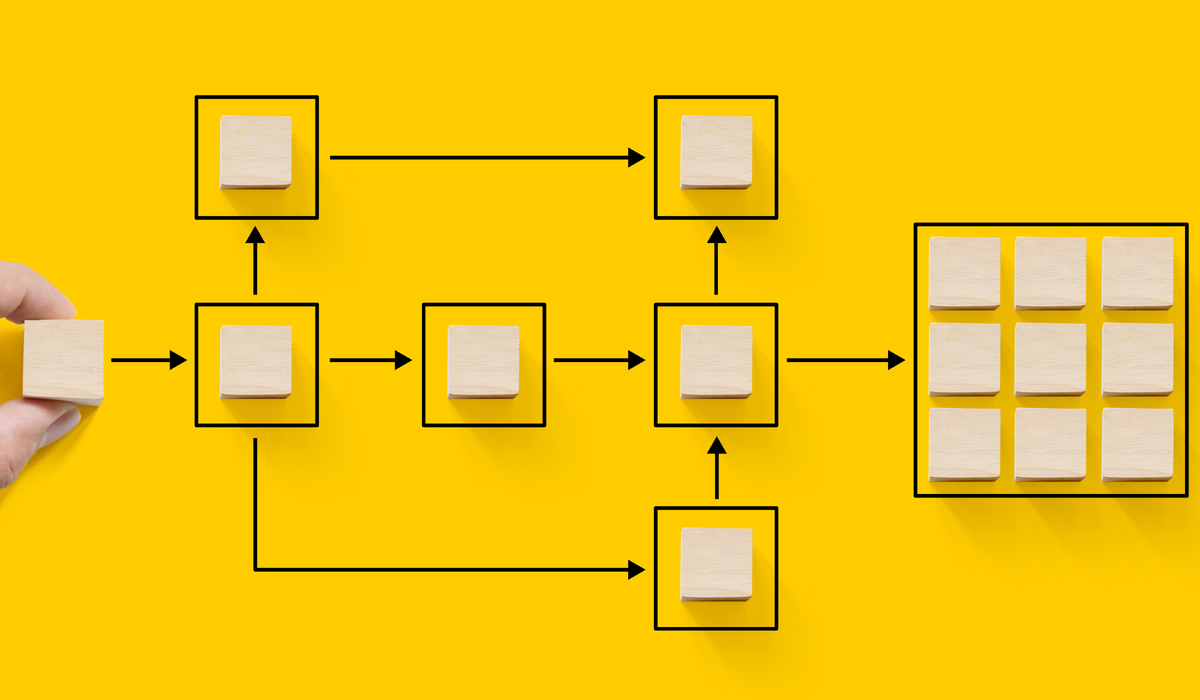SECTION
Workplaces of the Future. Your Guide to Building Community At Work

Listen to this article:
In today's new world of work, attracting and keeping top talent are the biggest challenges organizations face. The Great Resignation, the Great Attrition, or Quiet Quitting have proven that people will no longer settle for toxic cultures. Moreover, companies have understood that the people behind the business make it successful.
What if you could win the retention battle by building community at work? According to Greatplacetowork, employees who experience belonging are 3x more likely to look forward to coming to work and 5x more likely to want to stay at their company for a long time.
In this article, we'll go over practical ideas to build community in the workplace. Enjoy your reading!
What is community in the workplace?
A workplace community is all about the shared values, interactions, and connections among employees. Some people may think of it as just a buzzword, but it represents a fundamental shift in how companies look at their people and their work environment.
In the past, the workplace was often seen as a purely transactional setting, where employees clocked in, did their jobs, and left at the end of the day. However, employees seek something deeper and more meaningful in their professional lives. They yearn for a sense of belonging, mutual respect, and shared purpose within the workplace.
Building community at work fosters an environment where employees feel valued, heard, and connected to their peers and the organization. It goes beyond superficial camaraderie or casual office events; it's about cultivating a positive workplace culture where people genuinely care about their colleagues.
Why is community in the workplace important?
Many leaders tend to look solely at business KPIs and targets to assess if the company is on the right track. Sure, if you look only at the surface, everything may seem great, but if you scratch below, you may find a completely different story.
According to a SHRM study, 38% of surveyed employees reported feeling lonely on the job at least monthly.

A Cigna research highlights the consequences of loneliness on businesses, manifesting as diminished productivity, higher rates of illness, increased absenteeism, and a greater turnover rate.
People are social beings by nature. We need to develop genuine connections, and the workplace is no exception. After all, we might be spending more time at work than with our loved ones, especially if we commute daily to the office.
Being part of a community at work profoundly impacts employee engagement, satisfaction, and, ultimately, retention. Research consistently shows that when employees feel a sense of belonging, they are more motivated, innovative, and committed to their work.
10 insightful ideas on how to build community at work
Understanding the benefits of strong workplace communities is the first step toward achieving it. And because we want to equip you with all the necessary tools to create a sense of belonging, we’ve put together a step-by-step guide on how to build community at work.
Build a solid and positive workplace culture
Cultivating a culture that values respect, collaboration, and a shared sense of purpose is fundamental to building community at work, according to Simona Lapusan, Co-founder & COO of Zitec and Founder & CEO of Mirro.

A robust culture helps companies in several ways:
- Facilitates recruitment efforts. Attracting and retaining top talent is extremely difficult in today's volatile work environment. A toxic culture is one of the biggest deal-breakers
for job seekers. - Improves team and business performance. People are inspired and driven to excel in supporting cultures, collaborating seamlessly towards shared objectives. Hidden ambassadors play a central role in reinforcing these values and driving sustained performance.
- Increases employee engagement. People are naturally motivated to perform at their best and cultivate meaningful connections with colleagues when they resonate with the company’s culture. This enhances their overall work satisfaction and elevates their level of engagement.
- Decreases employee turnover. Employees want to work in an environment where they can thrive.
👉 Related: How to Create Company Culture in 10 Steps (Plus a Downloadable Checklist)
Invest in DEI in the workplace
Innovative companies have understood that the traditional, one-size-fits-all approach to work is not just outdated—it's counterproductive. Instead, investing in DEI (Diversity, Equity & Inclusion) in the workplace will set the stage for authentic connections.

Building community at work entails creating a space where people feel heard and express themselves openly. It’s about giving everyone a voice regardless of race, color, gender, ethnic background, or religion.
DEI best practices
DEI is critical for creating a fair and inclusive workplace. Here are some DEI best practices for organizations:
- Leadership commitment. Ensure that leaders actively support and champion DEI in the workplace. Their commitment sets the tone for the entire organization.
- Training and education. Provide DEI training for all employees to increase awareness and foster a more inclusive workplace culture. These training programs should address unconscious bias, microaggressions, and the value of diversity.
- Regular listening and feedback. Create channels for employees to voice their concerns and suggestions related to DEI initiatives.
- Zero tolerance for discrimination. Clearly communicate a zero-tolerance policy for discrimination, harassment, and retaliation, and provide multiple channels for reporting incidents.
Encourage a culture of recognition
Employees who are appreciated and praised for their results tend to feel part of a real workplace community and develop stronger loyalty towards it. Invest in a framework where employees can willingly and openly express gratitude for their colleagues' contributions and support, particularly in shared projects.
There are many ways to implement budget-friendly employee recognition programs, such as using private and public recognition, encouraging peer-to-peer recognition, or investing in recognition software.
Maintain regular and open communication
Effective communication is the glue that holds any community together. Open HR communication will, in turn, foster trust and loyalty toward the organization.
Consistently engage with your employees, maintaining transparency in sharing company news, initiatives, and milestones. Foster open dialogue through feedback channels, town hall meetings, and team huddles to ensure everyone's voice is heard.
Furthermore, openly and frequently communicate the company's mission and illustrate the link between employees' work and that mission. Clarify how, as a community of employees, they collectively contribute to the company's mission accomplishment.
Promote transparency
One can't have open communication without transparency. It is not only the foundation of trust but also instrumental in creating an environment where people genuinely want to work.
Achieving complete transparency in the workplace starts at the top. Encourage managers to lead by example, be transparent in decision-making, and offer open and candid feedback. Tools like Mirro's internal communication platform can support these efforts by empowering leaders to facilitate meaningful, targeted communication, fostering a sense of belonging across the team.
The more people acknowledge their biases and errors and understand their colleagues' needs and expectations, the stronger their trust in their teammates will become.
It's this trust that forges deeper connections in the workplace.
Implement wellbeing programs
Employee wellbeing is a cornerstone of a healthy community in the workplace. Develop well-rounded wellbeing programs that cater to physical, mental, and emotional health. These programs could include fitness challenges, mindfulness workshops, or access to mental health resources.
Take Zitec's example, the leading software company in Romania. The company has implemented a Refresh Wellness Program to help employees navigate difficult circumstances, adjust to change, and adequately manage their time and personal money. This effort provides specially designed learning resources for each relevant subject, assisting people in improving their general wellbeing.
Make onboarding a priority
The onboarding process is an employee's first impression of the workplace community. Prioritize it to ensure new hires feel welcome and understand the company culture from day one. Provide comprehensive training, assign mentors or work buddies to show them around, and offer resources to help newcomers acclimate to the workplace community.
Organize social events
Building a sense of community goes beyond what happens at work. Plan regular social events, whether in-person or virtual, to create opportunities for employees to connect personally. These events can include team-building activities, happy hours, or simply casual get-togethers.
For example, Zitec holds annual hackathons that welcome 100+ employees on average. They also plan activities such as book club meetings, board games, running, hiking, and sailing competitions to foster a culture of connection and collaboration among the team.
Engage in community service initiatives
Encourage employees to give back to the community together. Organize volunteer activities or support social causes as a team. This strengthens the sense of community within the workplace and demonstrates genuine corporate social responsibility.
Organize employee resource groups
Employee Resource Groups (ERGs) allow employees with common interests, backgrounds, or affinities to come together. Support the creation of ERGs, whether they focus on gender, ethnicity, or hobbies and interests, to foster a sense of belonging and inclusion.
Ready to bring your people together?
We've explored the core elements of building a workplace community, from fostering transparency and embracing diversity to recognizing and rewarding your employees. We've delved into the power of communication and the importance of trust. And we've emphasized the value of onboarding and creating an inclusive work environment.
Now, the question is, are you ready to put these concepts into action? Are you ready to transform your workplace into a thriving community where employees feel valued, connected, and inspired?
Mirro can help you on this journey. Our tool offers the resources to create an inclusive, transparent, and collaborative environment. It empowers your organization to develop strong relationships that drive success and make work a more fulfilling experience for your employees. Book a demo with one of our consultants and discover how to build community at work.







